At Best Cosmetic Hospitals, we believe that achieving the body you desire is not just about aesthetics—it’s about how you feel in your own skin. Cosmetic body reshaping is an empowering journey, offering you the opportunity to align your appearance with your personal goals and dreams. Whether you're aiming to enhance certain features, correct imperfections, or simply feel more confident, body reshaping can be the key to unlocking a happier, more confident you.
Body reshaping procedures are designed to contour and sculpt the body, allowing individuals to target specific areas for enhancement. These procedures range from liposuction and tummy tucks to more advanced techniques like fat transfers and body lifts, providing solutions for every body type and aesthetic goal.
Cosmetic body reshaping is about more than just altering your appearance; it’s about regaining control over your body and creating the image that makes you feel empowered. Each individual has unique goals, and these procedures are highly personalized to reflect what’s important to you. Here are some common reasons people choose body reshaping:

1. Achieve Your Desired Body Shape: Many people have areas of their body they wish to refine or enhance. Cosmetic body reshaping allows you to target these areas and achieve the contours and proportions you’ve always wanted. Whether it’s reducing stubborn fat or enhancing curves, these procedures give you the opportunity to sculpt your body to better align with your aesthetic preferences.
2. Restore Confidence After Weight Loss: Significant weight loss is a remarkable achievement, but it often leaves behind excess skin and uneven contours. Cosmetic body reshaping can remove excess skin, tighten sagging areas, and help refine your body’s shape, allowing you to fully enjoy the results of your weight loss journey. Procedures like tummy tucks and body lifts are commonly sought by individuals post-weight loss.
3. Boost Self-Esteem and Body Image: Feeling confident in your body can significantly impact your self-esteem and overall well-being. For many, cosmetic body reshaping is about creating a body image that makes them feel good in their own skin, improving not just their appearance but their mindset and confidence. This renewed sense of self can have positive effects in many areas of life.
4. Address Changes Due to Aging or Pregnancy: Over time, factors such as aging or pregnancy can cause the body to lose its youthful contours. Cosmetic body reshaping offers solutions to restore those contours, whether it’s a tummy tuck to address postpartum changes or liposuction to remove fat deposits that resist diet and exercise. These procedures help restore the body’s natural firmness and shape, giving patients back their pre-pregnancy or youthful silhouette.
Cosmetic body reshaping covers a wide range of procedures, each targeting different areas of the body to enhance or refine. Here are some of the most popular body reshaping surgeries performed at top hospitals worldwide:
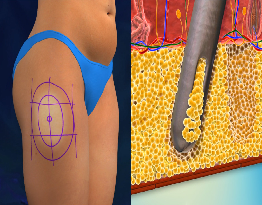
Liposuction is one of the most commonly performed body contouring procedures. It involves removing stubborn fat deposits that have proven resistant to diet and exercise. Liposuction can target areas like the abdomen, thighs, hips, arms, and neck, helping to sculpt the body and create a more defined, toned appearance. Advanced techniques like VASER liposuction and laser-assisted liposuction offer even more precise results.
A tummy tuck is designed to remove excess skin and fat from the abdominal area, creating a flatter and firmer midsection. This procedure is especially popular among individuals who have undergone significant weight loss or women post-pregnancy. In addition to removing excess tissue, a tummy tuck can also tighten weakened or separated abdominal muscles, resulting in a stronger core and more toned appearance.
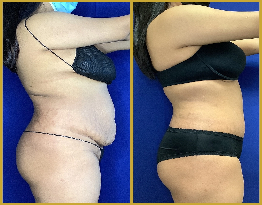
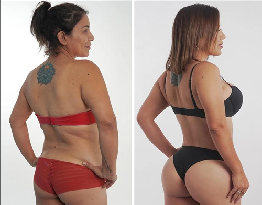
The Brazilian Butt Lift (BBL) is a popular cosmetic surgery that enhances the size and shape of the buttocks using fat harvested from other areas of the body. This procedure not only creates fuller, more contoured buttocks but also improves the overall body silhouette by removing fat from areas like the abdomen or thighs. The BBL is ideal for those seeking a natural enhancement of their curves without the use of implants.
A thigh lift is a body contouring procedure that removes excess skin and fat from the thighs, creating a smoother, more toned appearance. This surgery is often sought by individuals who have experienced significant weight loss and are looking to improve the shape of their thighs. Thigh lifts can target the inner or outer thighs, depending on the patient’s goals.
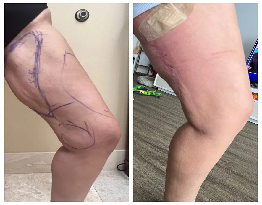
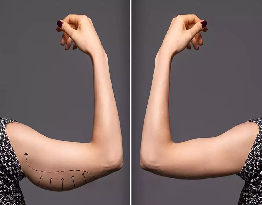
An arm lift, or brachioplasty, is designed to reshape the upper arms by removing excess skin and fat, creating a more toned and defined appearance. This procedure is popular among individuals who have experienced sagging skin in the arms due to aging or weight loss. By tightening and reshaping the arms, patients can enjoy a more youthful and fit look.
A body lift is a comprehensive procedure that addresses sagging skin and excess fat in multiple areas of the body, typically the abdomen, thighs, buttocks, and lower back. This surgery is particularly popular among individuals who have undergone massive weight loss and are looking to remove large amounts of excess skin. A body lift can dramatically improve the body’s contours and create a more proportionate and attractive silhouette.
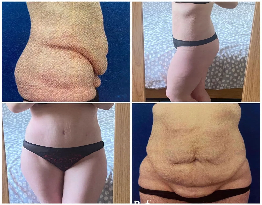
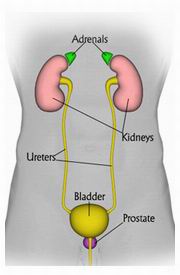
Adrenalectomy is the surgical removal of one or both of the adrenal glands. The adrenal glands are paired endocrine glands, Adrenalectomy Treatmentone located above each kidney, that produce hormones such as epinephrine, norepinephrine, androgens, estrogens, aldosterone and cortisol. Adrenalectomy is usually performed by conventional open incision, but in selected patients surgeons may use laparoscopy.
Adrenalectomy is usually advised for patients with tumors of the adrenal glands. These tumors may be malignant or benign, but all typically excrete excessive amounts of one or more hormones. This helps correct hormone imbalances and may also remove cancerous tumors that can invade other parts of the body. In certain situations when hormones produced by the adrenal glands aggravate another condition such as breast cancer, adrenalectomy may be recommended.
Extreme care has to be taken during this procedure as there are numerous blood vessels connected to the adrenal gland. The glands lie close to the vena cava, one of the body's major blood vessels and to the spleen and the pancreas.
Adrenalectomy can be performed through laparoscopic (minimally invasive) or open surgery. In laparoscopic surgery, small incisions are made in the abdomen, and a camera is inserted to guide the surgeon in removing the gland. In open surgery, a larger incision is made to access the gland directly. The type of surgery depends on the size and nature of the adrenal problem.
In the anterior approach, the surgeon cuts into the abdominal wall. Usually the incision will be horizontal, just under the rib cage. If the surgeon intends to operate on only one of the adrenal glands, the incision will run under just the right or the left side of the rib cage. Sometimes a vertical incision in the middle of the abdomen provides a better approach, especially if both adrenal glands are involved.
In the posterior approach, the surgeon cuts into the back, just beneath the rib cage. If both glands are to be removed, an incision is made on each side of the body. Though it does not provide a view quite as clear of the surrounding structures as the anterior approach, this approach is the most direct route to the adrenal glands.
The flank approach is particularly useful in obese patients where the surgeon cuts into the patient's side. In cases where both the glands need to be removed, each side is done at a time.
The last approach involves an incision into the chest cavity, either with or without part of the incision into the abdominal cavity. It is used when the surgeon anticipates a very large tumor, or if the surgeon needs to examine or remove nearby structures as well.
This technique does not require the surgeon to open the body cavity. Instead, four small incisions (about 1/2 in diameter each) are made into a patient's flank, just under the rib cage. A laparoscope, which enables the surgeon to visualize the inside of the abdominal cavity on a television monitor, is placed through one of the incisions. The other incisions are for tubes that carry miniaturized versions of surgical tools. These tools are designed to be operated by manipulations that the surgeon makes outside the body.

Most of the preparations are the same as in other major operations. It is also taken care that hormone imbalances are taken care of. Physicians will instruct you to certain medications for days or weeks before the surgery. Problems like inadequate potassium in the blood and hypertension caused due to adrenal tumors should be treated prior to the surgery.
Most adrenal tumors can be imaged very well with a CT scan or MRI and benign tumors tend to look different on these tests than do cancerous tumors. Surgeons may order a CT scan, MRI, or scintigraphy (viewing of the location of a tiny amount of radioactive agent) to help locate exactly where the tumor is. The day before surgery, patients will probably have an enema to clear the bowels.
Patients stay in the hospital for various lengths of time after adrenalectomy. The longest hospital stays are required for open surgery using an anterior approach. Hospital stay would be for about three days for open surgery using the posterior approach or for laparoscopic adrenalectomy.
The special concern after adrenalectomy is the patient's hormone balance. There may be several sets of lab tests to define hormone problems and monitor the results of drug treatment. In addition, blood pressure problems and infections are more common after removal of certain types of adrenal tumors.
As with most open surgery, surgeons are also concerned about blood clots forming in the legs and traveling to the lungs (venous thromboembolism), bowel problems and postoperative pain. With laparoscopic adrenalectomy, these problems are somewhat less difficult, but they are still present.
The special risks of adrenalectomy involve major hormone imbalances, caused by the underlying disease, the surgery, or both.These can include problems with wound healing itself, blood pressure fluctuations and other metabolic problems.
Other risks are typical of many operations.These include:
▣ Damage to adjacent organs (spleen, pancreas)
▣ Loss of bowel function
▣ Blood clots in the lungs
▣ Lung problems
▣ Surgical infections
▣ Pain
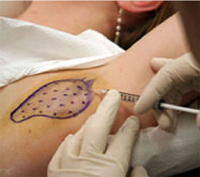
Axillary Hyperhydrosis involves extreme, dripping sweat in the armpits, with constant odor that is usually resistant to all deodorants. Axillary sweating may be present alone or in conjunction with any or all other types of hyperhydrosis. Sufferers are prevented from wearing certain fabrics and colors because the sweat causes staining and rotting of the clothing. The sympathetic nervous system over-stimulates the sweat glands, causing the hyperhydrosis. This condition may be aggravated by anxiety, but, it can occur without it. Each patient has to be evaluated individually, to determine if they are candidates for the ETS procedure.
When a man wears a suit and is bothered by the condition of axillary hyperhydrosis (underarm sweating), he often decides he has to leave the jacket on, at all times, because the sweat from his armpits will soak through his shirt. A woman with this disorder will not be able to wear delicate fabrics such as silk, because the sweat will leave very noticeable, wet rings under her arms.
The excessive sweating causes embarrassment and makes people feel less confident about themselves.
Hyperhydrosis is a medical condition that causes perspiration far greater than the physiological needs of the body. Although no one knows why some individuals sweat excessively, it is known that the sweating is controlled by the sympathetic nervous system.
Sweaty hands can occur while meeting someone for the first time, through nervousness or emotional distress.
Axillary Hyperhydrosis, excessive sweating in the armpits, can cause embarrassing wet marks on shirts. People with this condition avoid many colors and fabrics which could show the sweat marks.
Plantar Hyperhydrosis refers to excessive sweating of the feet. It is a known cause of foot odor and athlete's feet. The combination of palmar and plantar hyperhydrosis can create a problem driving a vehicle because the moisture of the hands and feet can build up to make the steering wheel and foot pedals slippery which can cause a lack of control of the vehicle.
Facial Hyperhydrosis, sweating of the face, may be so profuse that it causes the person to be insecure, appearing overly-anxious when this is not really the case. Along with facial sweating, someone could experience facial blushing, another embarrassing manifestation of the activity of the sympathetic nervous system.
Treatment for Hyperhydrosis
The only long-lasting, effective treatment for Hyperhydrosis is to surgically stop the signal transmissions of the sympathetic nerve impulse to sweat glands. This procedure is known as Endoscopic Thoracoscopic Sympathectomy (ETS) can be achieved for all locations in the body.
This is best performed by thorasic surgeons and is done under general anesthesia. The sympathetic nerves located just behind the ribs are cut or clamped through two small incisions (5 to 10 mm) below the armpit area on each side of the chest. In the cutting method, the nerve is simply cut which reduces the body's ability to produce sweat in those identified problem areas. This method is preferred over the clamping method where metal clamps are applied on the nerve to stop the sweating from a particular section of the nerve. The procedure is performed bilaterally in the same session. After patients wake up from the anesthesia, they are moved to a recovery room, where they are carefully monitored, before being discharged to go home. Patients can return to work or school within a few days. The procedure is extremely effective for palmar and axillary hyperhydrosis. The endoscopic technique is very safe and is curative in 98% of patients.

Body sculpturing consists of the following procedures:
Upper Arm Lift If you have unsightly sagging skin on the upper arms due to aging, genetics or weight loss, an upper arm lift would be recommended. Upper Arm Lift, Liposuction, Thigh/Buttock Lift, Abdominoplasty, Breast lift, etc
Upper Arm Lift If you have unsightly sagging skin on the upper arms due to aging, genetics or weight loss, an upper arm lift would be recommended.
Upper Arm Lift If you have unsightly sagging skin on the upper arms due to aging, genetics or weight loss, an upper arm lift would be recommended.
This procedure is usually done under general anesthesia. An incision that runs from near the elbow into the armpit is made to remove the unwanted skin. It is done on the inner arm toward the back, where the excess skin is removed and the incision closed. After healing some scarring will always be visible.
All surgical procedures have some degree of risk. Minor complications that do not affect the outcome occur occasionally.
Post surgery, the upper arms are wrapped in an elastic sleeve to reduce swelling. Healing usually occurs in 10-14 days. Sutures can be removed within 2-3 weeks. The swelling and bruising around the area gradually disappear over 3-4 weeks. The scars depending on your skin fade off in 6 months to 2 years.
Liposuction is a procedure that is used to remove unwanted fat from specific areas like the abdomen, hips, buttocks, thighs, knees, upper arms, chin, cheeks and neck.
There are different types of techniques used like the tumescent technique, super-wet technique and ultrasound-assisted lipoplasty (UAL). These provide better results and faster healing to the specific areas. These methods help in fat reduction from certain stubborn areas that don't respond to traditional weight-loss methods.
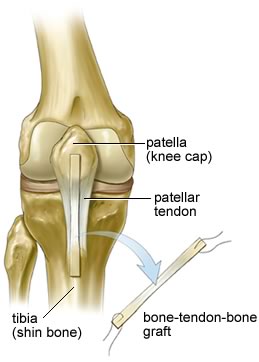
A bone implant also known as Allograft or graft is a surgery that is done to place a new bone into spaces around a broken bone or bone defects. The new bone can be taken from the patient's own healthy bone (this is called an autograft) or from frozen, donated bone (allograft). A surgeon makes a cut over the bone defect. The bone graft is shaped and inserted into and around the area. The new bone is held in place with pins, plates, or screws. Stitches are used to close the wound. A splint or cast is usually used to prevent injury or movement while healing.
Bone grafts are used to:
Repair broken bones (fractures) that have bone loss
Repair injured bone that has not healed
Fuse joints to prevent movement
The risks for any surgery would be excessive bleeding or infection. Most bone grafts help the bone defect to heal with little risk of graft rejection.

Buttock augmentation or Butt Implants procedure is designed to enhance the size of the buttocks. This involves the surgical insertion of artificial implants (silicon) into the buttocks or fat from a person's body, known as fat transfer (or "fat grafting") in order to enhance their size and shape. This surgery is frequently sought by women who are unhappy with the size of their buttocks or generally lack fat in this area or are unable to develop proportionate gluteal muscles. Some feel their buttocks lack shape, while others want to have a more sensuous backside by making them larger and rounder
An incision can be made where the cheek meets the back of the thigh or down the buttock crease. Though this area does carry a high infection risk, the cut is usually made in the buttock crease where scars are not noticeable. A pocket large enough to insert the butt implants are created either under the gluteus maximus muscle, or on top of the muscle. Liposuction may also be performed in order to further enhance the shape of the buttocks. After performing the same on the other side the incisions are closed after checking for symmetry
In most cases general anesthesia is preferred for this procedure.
The surgery usually takes about two to three hours to complete, it may vary on the size of the implant and the technique used. Since this is done as an outpatient procedure you'll be able to get discharged within a few hours of the surgery. Avoid sitting on the buttocks during the initial healing phase. With so much stress regularly placed on this area, patients may experience great pain during the recovery period.
Bleeding, infection, nerve and muscle damage are the other possible risks with this procedure. Butt implants can shift and make one buttock different than the other. Other risks include adverse reaction to anesthesia and the need for a second or sometimes third procedure. Risks of infection are higher when incisions are made near the rectal area.
The best candidates for this procedure are those who are young and in good physical health and psychologically stable. They should be realistic in expectations and should be undergoing for this surgery for the first time.
Pain, bruising and some discomfort may occur. Buttock implant patients will not be able to lie on their backs for about 2 weeks. Most surgeons recommend wearing a compression garment to hold down swelling. One can be back to work in 2 weeks.
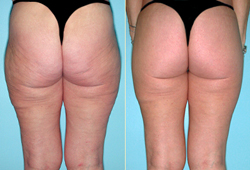
The butt lift cosmetic surgery is done to enhance and balance the contours and appearance of the body. Individuals who want to add fullness to their buttocks area or a muscular look or people who have undergone weight loss or reduction and have good amount loose skin around are good candidates for butt lift.
The techniques adapted to this surgery are as follows:
▣ Implanting solid or semi-solid implants under the upper butt muscles to enhance the contours of the butt region Micro fat grafting (fat from other areas of the body are sourced via liposuction and grafted into the buttocks)
Butt lift surgery that utilizes implants can lift and enhance the features of the buttock region. An incision two to three inches long is made in the crease between the butt cheeks. An implant, typically made of elastomer, is inserted into the upper portions of the buttocks between the muscle (gluteus maximus) and the fascia (the connective tissue that surrounds the muscle). The space for the implant is made to the exact size as the implant itself, which minimizes the risk of shift in position.
▣ The second type of butt lift cosmetic surgery involves taking fat from a different region of the body, often the abdominal area, the upper thigh area, the arms, or the back and micro grafting it into the buttocks area
In order for this procedure to be possible, the person undergoing this surgery should have enough fat in other parts of the body that can be used. Fat is gently extracted from the host area using liposuction equipment. Fat particles are purified and then inserted into the layers of the buttocks. This is done through a very small incision which would around 1/8th of an inch in width. The fat cells are then uniformly distributed ensuring that they will have ample blood supply to keep them alive.
In certain cases the surgeon will cut across the top of the buttocks depending on the extent of the operation, sometimes along the sides as well. Crescent shaped sections of skin and fat are removed and the skin is pulled together and sewn.
▣ Buttock lifts can also be performed using 'suture' or 'threadlift' techniques. This involves the placement of sutures or threads with tiny 'teeth' into the brow through a small insertion. The threads are pulled upwards and secured and the insertion is stitched shut
Butt lift cosmetic surgery is a relatively safe and simple procedure that can give the buttocks region a more visually pleasing and younger appearance. This type of procedure typically takes three to six hours. It is usually performed under general anesthesia on an outpatient basis.
The total healing time for most buttock lifts is usually four to six months and if all goes well bruising and swelling usually subsides within a month.
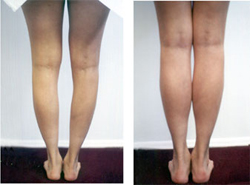
Calf Augmentation or Calf Implant procedure is best suited to people who find it difficult to develop their calf muscles, even with extensive, targeted exercise. People who have had an illness that has caused the muscles to appear deteriorated or under-developed can undergo a calf implant surgery in order to have a better-balanced lower body.
The implants come in a variety of shapes and sizes and one can also have a custom built one in the case of disease or injury to the calf muscles. These implants made of silicon are inserted above the calf muscles. After calf implant surgery, the legs can appear more shapely and defined.
The length of the procedure varies, but generally takes about 45 minutes to 1 hour for each leg. It is usually done under general anesthesia or it may be performed under local anesthesia with light or deep sedation. The longer the procedure is expected to take, the more likely that general anesthesia will be recommended. One can generally return home within a few hours of the surgery if no other medical problems are there or a lengthier procedure performed under general anesthesia. In such cases, it may be necessary to spend the night in the hospital so your recovery process can be monitored by the medical staff.
Following the surgery the calves may feel stiff and sore with a little discomfort associated with the incisions. Pain medication and ice packs may be used in the first few days to reduce discomfort and swelling. It is advisable to rest and keep the legs elevated during the week following the surgery. There will be some discomfort during initial movement.
Normal physical activities may be resumed a few days after the surgery. However, in order to allow the body time to heal, vigorous activities such as exercise should be delayed until about six weeks after the surgery.
The results of this procedure are generally quite long lasting, but there may be some problems, such as the circulatory problems that sometimes come with age eventually necessitating the removal of the implants. With age the muscles begin to shrink and the outline of the implants may occasionally become visible many years later.
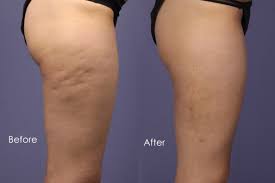
Cellulite can be defined as lumpy substance that resembles cottage cheese and is commonly found on human parts such as buttocks, stomach and thighs. Cellulite is a serious problem for most women-especially for women over 35. It attacks the buttocks and thigh areas and can be extremely unsightly.This term is used to describe deposits of any material (generally fats) trapped in pockets of connective tissues that are situated just under the skin. This condition is responsible for a progressive bulky appearance with creases and layers of fats that are visible even from the distance.
One can check such condition by just pinching the skin around the upper thighs. If you pinch and you get some lumpy thing, the body might have cellulite.Weight can make the cellulite condition worse, it can effect thin people too.As time passes it progressively worsens and gives rise not only to physical problems, but also to psychological ones as wel
The main causes of cellulite are due to hormonal changes.Some of them include genetics, the type of skin you have, your age and your level of body fat. Poor blood circulation and fluid retention can also transform the subcutaneous fat cells into cellulite.The person with lifestyle that lacks exercises and physical activities is also susceptible to have cellulite. Consumption of saturated fats and sugary items, poor hydration also contribute housing unwanted layers of the fats many where in the body that can later appear as cellulite.
Through proper diet, exercise and cellulite treatments, you can regain that smooth skin and shapely figure.Keeping check on body fat can prevent cellulite or reduce cellulite, but it is not eliminated completely.Physical activities such as exercise and diet can also help reduce cellulite. Cellulite can also checked by procedures like laser therapy and liposuction to reduce cellulitelaser therapy and liposuction to reduce cellulite. However, there are far cheaper, safer, and non-invasive treatments available.
Cellulite treatment involves various non-surgical methods aimed at reducing the appearance of dimpled skin. Popular procedures include laser therapy, radiofrequency, and mechanical massage techniques like endermologie. These treatments work by breaking down fat deposits, stimulating collagen production, and improving skin elasticity. While results vary, multiple sessions are often recommended for optimal improvement in skin texture and tone.
Recovery from cellulite treatment is generally quick, with most patients resuming normal activities immediately. Mild swelling, redness, or bruising may occur, but these effects typically subside within a few days. Depending on the treatment type, multiple sessions may be needed for optimal results, with gradual improvement seen over a few weeks. Following post-care instructions, such as staying hydrated and maintaining a healthy lifestyle, can enhance results and recovery.

A chemical peel is a treatment in which an acid solution is used to remove the damaged outer layers of the skin.It is helpful for those individuals with facial blemishes, wrinkles and uneven skin pigmentation. Phenol, trichloroacetic acid (TCA) and alphahydroxy acids (AHAs) are used for this purpose. In general, patients with fair skin and light hair are the best chemical peel candidates.
Although chemical peel may be performed in conjunction with a facelift. However, patients with other skin pigmentation and hair color can achieve good results as well. Ideal candidates for the chemical peel procedure are individuals who are unhappy with the appearance of their skin, have realistic expectations of their procedure, and do not smoke.
There are risks included like scarring, infection, swelling, changes in skin tone, and cold sore outbreaks. You can reduce the risks associated with facial peels by following all of the doctor's instructions completely and by providing your doctor with a complete medical history.
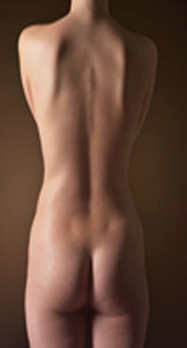
The ideal candidate for thigh liposuction should be close to ideal weight and in good health. Liposuction as a procedure is done to improve their self image, to fit better in clothing and to have a more proportionate body. Though it is not a weight loss method, in liposuction a patient on a average looses about 5-7 lbs when about 3000 to 3500cc of fat is removed. The amount of fat removed varies across people. In a healthy patient fat in excess of 5000cc can be removed but in such cases the patient is adviced overnight stay at the hospital to ensurethat there are no complications.Thigh liposuction removes only fat and the skin, if it has good elasticity normally retracts over the new thinner layer of fat that remains. If the skin has lost its elasticity the skin will appear loose after the thigh liposuction. This would be discussed in consultation and the most appropriate method would be suggested depending on the body structure.
Removal of fat cells are permanent, those cells that remain do not multiply but could enlarge. In case of weight gain after liposuction, it would be noted in other parts of the body. It does not usually return to the area suctioned since these fat cells are gone, but the fat cells in other areas can still enlarge.
To minimize postoperative swelling and pain, circumferential thigh liposuction is best done as a two-stage procedure done on two different days with a gap of 4 weeks. This helps patients return to normal activity almost immediately after each procedure, with minimal swelling.
If done around the entire circumference of the thighs on a single day leads to excessively prolonged healing and swelling. This could lead to trauma and inflammation with impaired absorption of localized fluids leading to swelling of the leg and foot. This again could affect venous drainage from the leg and lead to deep vein thrombosis. become visible many years later.
Thigh liposuction can be done under general anesthesia, local anesthesia or local anesthesia with sedation. The procedure takes between 1-3 hours, depending on the number of areas and the extent of treatment. Post operative garments are given which are typically worn for the first 3 weeks. Some patients have endermologie treatments after thigh liposuction. This keeps the skin smooth and helps with cellulite as an adjunct to the liposuction. There is little pain immediately after thigh liposuction because the local anesthetic that is placed at the time of surgery lasts about 4 hours. After the local anesthetic wears off there can be significant discomfort that requires pain medication. This usually lasts 24-48 hours.
Some risks in Thigh Liposuction include swelling and inflammation of the legs.
After the procedure the patients are encouraged to walk on day one. Most people return to work in about 3-5 days. Exercise can be resumed after the first week and most people are at full activity after 3 weeks of thigh liposuction. Swelling will be there for several months after the procedure and lasts longer in older patients.
.jpg)
Dermal fillers are becoming increasingly popular as a means to help reverse the changes associated with aging.Cosmetic dermal fillers include collagen, hyaluronic acid, fat and other substances.Collagen acts as the major support protein for our skin, elastin allows our skin to stay firm and resist wrinkles, and hyaluronic acid helps to trap water and add volume and shape to our skin.The goal of dermal fillers is to return the dermis to its original youthful state, dermal fillers can give a more natural appearance than surgical face lifts.The main purpose of dermal fillers is to add volume to specific areas, in order to eliminate wrinkles such as crow's feet or enhance a feature such as cheeks and lips.
Dermal Fillers are generally are made of several types of materials of synthetic, man-made and natural categories, and they have been developed into various standards depending on the level of usage.They are often a kind of soft tissue designed in such a way that enables injection into the skin for purposes of improving the appearance.
Dermal fillers are injected, usually without the need for local anaesthetic, into lines and wrinkles to plump them out. The dermal filler then remains in the skin, where it binds water to produce a lift and give firmness to the treated area
The fillers can last upto six to seven months .The filler is gradually broken down and absorbed by the body, so the lines, wrinkles or lips will ultimately return to their previous appearance without top up treatments.
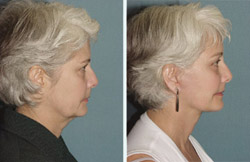
Endoscopic forehead and brow lifting show that excellent results are obtained with this technique. Advantages over the coronal and trichophytic approaches include significant reduction in the length of incisions, improvement in the camouflage of these incisions and reduction of blood loss and surgical trauma. The endoscopic forehead lift also reduces scalp hypesthesia. Disadvantages include increased cost because of the need for more sophisticated equipment and risk of injury to either the sensory nerves or the motor nerves in this region.
Endoscopic forehead lift involves four to six short (one inch) incisions behind your hairline. Through these small incisions, the surgeon inserts and endoscope which has a tiny camera on the end. This allows her or him to see under your skin without making a long incision across the top of your head. Through this technique, your plastic surgeon will be able to do most of the things that can be accomplished through a coronal lift with a few notable exceptions. Your plastic surgeon will be able to weaken the scowl-causing muscles but will not be able to directly alter the muscle that causes horizontal wrinkles. The surgeon can lift your forehead, but does not remove the excess scalp. It is shifted upward and backward on your skull. To secure your scalp into its new position, your plastic surgeon may drill small hole into your skull and place tiny screws (which later are removed or which are absorbed by your body). Even with these screws, because excess scalp is not removed, there exists a high potential for your forehead and brows to droop after an endoscopic lift. Though the hairline gets raised, this procedure does not cause temporary numbness on top of your head.
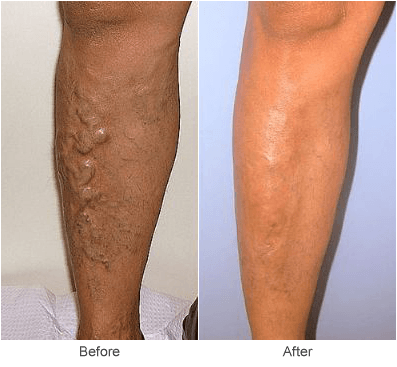
Sclerotherapy is the standard for the treatment of spider veins of the leg. Sclerotherapy is the injection of a substance (a "sclerosant") which when administered causes the vessel to collapse. Sclerotherapy agents include hypertonic saline, SDS and aetoxysclerol (polidocanol), Hypertonic saline, or a highly-concentrated salt solution.
Aetoxysclerol (polidocanol), is extensively used for sclerotherapy by dermatologists and plastic surgeons because it is safe, effective and well-tolerated. Lasers in general, can be more painful and are considered by most experts as being more risk-prone for potentially causing hypopigmentation and scarring.
Patients with protuberant veins may be a candidate for ambulatory phlebectomy, a procedure, which locally hooks and strips veins through a small incision or endovenous radiofrequency treatments.
Unsightly blood vessel or venous blemishes of the legs are usually very small, fine spidery or snake-like blood vessels running very close to the surface of the skin and have a very obvious red or purple-blue appearance. It is because of this obvious color, it cannot be covered with makeup, that make people want to remove these vessels.
The use of hypertonic salt (saline) solution has been a significant advance over the previously used materials, with lesser side effects in comparison with previous methods. Because salt is a natural body component there is not the concern for allergic reaction as there would be to previously used foreign materials. The salt is simply a stronger salt solution (23% NaCI) that will cause enough irritation of these little blood vessels to cause the vessel walls eventually to stick together, thus completely closing them off or partially closing them off. This results in either a very light color appearance to the vessels or complete disappearance.
Though not known clearly, the situation is obviously much more common in females. A familial predisposition, pregnancy, obesity, trauma, long periods of standing, sitting, etc. have been cited as possible reasons apart from hereditary tendency.
An injection of the solution is given with a very fine gauge needle. Fifteen to thirty seconds of mild discomfort or burning at the site of the injection may be experienced. Some patients may also experience a local muscle cramp which usually will only last a few minutes. A temporary flushing around the blood vessel which is expected in 100% of cases is seen.
The vessels will either lighten or completely disappear usually over the first month. In certain vessels, it may take as long as two or three months. Since many of these vessels interconnect, one injection may eradicate several dozen obvious blood vessels at one time. This is a distinct advantage of this method as opposed to methods that may treat isolated vessels at one time.
There is a chance that a small amount of salt solution will usually seep outside the blood vessel into the surrounding skin. This in fact happens to a small degree with all injection sites because we continue to infiltrate solution until a small amount seeps out. This tiny bleb that results in the skin usually heals quickly but may in some circumstances result in a small crust that may leave a small brown spot. This is not significant and will usually disappear, but in certain cases may leave a permanent small brown spot. In almost all circumstances this is much less obvious than the original blood vessels that were there. Some mild or moderate bruising may be seen depending on how fragile the blood vessels are. It may take a few weeks for them to clear.
A small coagulum of blood may develop at the injection site which becomes tender. This can gently be removed to relieve the inflammation.
A retreatment is done if vessels have not lightened after a period of 4 weeks. Depending on the extent, four to twelve sessions will help obtain a reasonable pleasing cosmetic effect.
After the procedure you will have multiple bandages on for 24 hours. You will be asked to wear an Ace-wrap or compression hose while awake for 1 week. One should refrain from doing any kind of exercise or strenuous activity for 2 days. Avoid exposure to sun for 4 weeks to avoid discoloration.
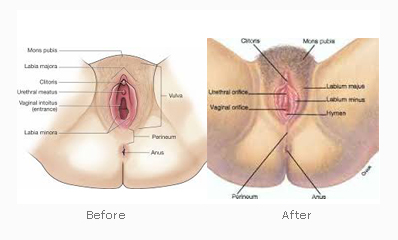
The hymen, a tissue membrane consisting of elastic and fibrous tissue, partially covers or surrounds the vaginal opening as part of the vulva (external genitalia). It partially covers the opening (introitus) of the vagina in most girls. The social function of the hymen, has been and still is a mythical symbol of virginity across many cultures.
Rupture of the hymen normally occurs during first intercourse or during sports activities like bicycling, horseback riding, gymnastics, etc. Inserting tampons also causes rupture of the hymen. In younger women, the hymen is very vascular. In menopausal women it has become very thin. In adult virginal women, the hymen surrounds the vaginal opening more or less completely.
The hymen repair procedure is done on an outpatient basis in a hospital under local or general anesthesia. In a simple repair the tissue is simply pulled together and sutured. The result is not meant to last. In this type of surgery, definite healing is rare because the hymen is relatively avascular. When the hymenal leftover are insufficient repair is done by approximating the undermined hymen remnants or a vaginal flap.
The surgeon uses dissolvable sutures (stitches) to reconnect the hymen's torn membrane and partially cover the opening to the vagina. There is a minimal risk of infection or complications (as with any surgical procedure) and the entire procedure takes just one to two hours. The recovery time is four to six weeks, after which the patient may engage in all normal activities.
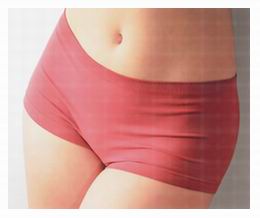
Labiaplasty is a surgical revision of the labia, the skin folds at the opening of the vagina. The labia in some woman are too large, loose or asymmetrical and a labiaplasty can correct these imperfections and create an aesthetically pleasing appearance.
There are two pairs of labia:
Labia majora (outer labia)
Labia minora (inner labia)
The labia minora which is smaller can be reduced with labiaplasty, with an excision of the excess labia. A large labia minora may be visible and cause physical discomfort in tight clothing or a swimsuit. This procedure helps correct the shape and size to a more comfortable and appealing situation.
This procedure is done in surgical center or hospital under general anesthesia and takes approximately LABIAPLASTY AND VAGINOPLASTY SURGERY2 hours. Basic recovery will take about a week and normal sexual activity should be possible in six to eight weeks. The benefit of this surgery is that a woman can have a labia that is smaller, less fleshy and symmetrical.
Vaginoplasty is usually a procedure done to tighten the loose or weak vaginal muscles. Vaginoplasty, sometimes referred to as rejuvenation of the vagina, can usually correct the problem of stretched vaginal muscles resulting from childbirth(s) and is a direct means of enhancing one's sexual life once again. The procedure typically tones vaginal muscle, resulting in greater contraction strength and control, thereby permitting greater sensation during sexual experiences. Vaginoplasty is a standard gynecologic surgical procedure. It tightens vaginal muscles and surrounding soft tissues, by reducing excess vaginal mucosa (vaginal lining). The result is an immediate decrease in the size of vaginal muscles, resulting in more friction during sexual experiences.
Vaginoplasty is performed as a standard gynecologic surgical procedure and usually takes about over an hour. The incisions made to tighten your vaginal muscles will be sutured with dissolvable suturing material.
After surgery, the patient is usually able to walk comfortably within a few days and may return to sexual activities within 4-6 weeks
Laser Vaginal Rejuvenation (LVR) is a procedure used to strengthen and tighten the vaginal muscles.
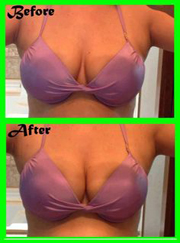
Non-Surgical Breast lift procedure uses the Titan device. The use of Titan Laser to perform a non-surgical breast lift procedure is a popular option amongst those who want to avoid both the costs of surgery and the physical aspects of surgery itself.A Breast Lift (otherwise known as a Mastopexy) is a surgical procedure that can be performed using a number of different techniques to correct sagging, deflated breasts (known as breast ptosis).Every woman will have her own unique goals and expectations for the outcome of a Breast Lift. Woman who typically seek a Breast Lift surgery are those whose breasts have lost volume and are sagging due to weight loss, pregnancy, breastfeeding (or nursing) and/or aging.
The procedure works by targeting the sagging upper chest areas for treatment using the Titan Laser. The breast lift happens as the slackened skin and collagen below the collarbones reacts to the Titan Laser. As with the typical behavior of other Titan Laser treated areas, the upper chest regions weaker collagen is heated which causes it to immediately contract and thicken. The treatment sessions take about 30 minutes to one hour depending on the patient needs. Micro injuries to the dermis layer of the skin are created through the application of Titan laser which in turn triggers production of new collagen which happens in the next few months. Though not required, a mild anesthetic cream may be applied over the areas to be treated.
The procedure is almost pain free. There are few side effects experienced from treatment via the Titan Laser. Patients might experience a small amount of redness that typically will fade after an hour or so. Any swelling that occurs should subside within a day. Individuals receiving treatment may immediately return to work. What makes the Titan Breast Lift procedure a popular option is its minimal impact to the patient and short recovery time. Furthermore the skin surface is not damaged as the procedure does not extend below the dermis region.
The Breast Lift procedure is a popular option as it has a short recovery time. Furthermore the skin surface is not damaged as the procedure does not extend below the dermis region.
Titan laser stimulates formation of new collagen. The results take approximately six to eight months to effect fully. This is a procedure through which one can postpone a surgical breast lift procedure.
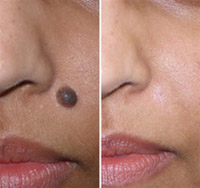
If you have a mole that displays external changes it has to be examined by a doctor with experience in treating moles, related skin conditions and skin cancer. Not all atypical moles turn out to be cancerous, but are more likely to develop into cancer. Moles may also be removed to improve appearance.
A local anesthesia is used for this procedure. A pathological evaluation of the mole is first done to rule out cancer. If the results are normal the surgeon can remove it either by shaving or cutting it. The shaving method removes the protruding surface of the mole so that it is flush with the surrounding skin. This technique is common for patients who have moles that become irritated by clothing or movement. This method can leave some of the mole cells beneath the skin which could grow back over the next several years.
The cutting method of mole removal is more commonly used for potentially cancerous moles. This procedure removes the mole as well as the surrounding and underlying tissue in the shape of an ellipse and is often called elliptical excision. A suitable surgical blade or a laser may be used for this procedure. The laser technique reduces bleeding and allows for quicker healing time with no sutures. The area of disection is covered with a suitable bandage. After a mole is removed, a scab will develop and then heal within a couple of weeks.
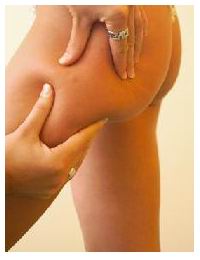
A thigh lift is a form of cosmetic surgery designed to remove excess and loose thigh lift is a form of cosmetic surgeryskin from the thigh as well as the buttocks. The procedure is most suited for those who have lost a significant amount of weight through a weight reduction program and have been left with excess and loose skin. Removal of the excess skin improves the overall appearance of the thighs by making it look more contoured and less dimpled with cellulite.
An incision is made in either the inside or outside of the upper thigh. The number of incisions will depend upon the amount of skin that needs to be removed. These incisions generally run along the side of the groin or beneath the buttocks. Scarring depends upon the ability of the skin to recover, but however the thighs will look thinner, firmer and more attractive.
The procedure is done under general anesthesia or a combination of Local or Spinal anesthesia with a medicine to sleep. The procedure takes about 2 to 3 hours and is greatly dependant on the amount of skin that needs to be removed. Though this is an outpatient procedure, patients prefer hospital stay for a day or so. Special supportive garments are to be worn after the surgery for a couple of weeks. This helps reduce discomfort and swelling while also supporting a better healing process.
As is the case with any surgical procedure, there are potential risks involved with thigh lift surgery. Risks that are specifically associated with thigh lift surgery include:
▣ Blood clots in the legs, which is a rare complication that can be further minimized by wearing leg stockings following the surgery
▣ "Tightness" in the thighs, which is a feeling that generally subsides after the wounds heal
▣ Feeling unhappy with the results, which may occur if too little skin is removed or if scarring is excessive or easily noticeable
▣ Prolonged numbness in the thighs and legs
▣ Fluid collection in the incision area that will need to be aspired
Although there are some risks associated with thigh lift procedures, the risks are rare and can be addressed with subsequent surgeries if they occur. Therefore, most people feel that the benefit of removing the excess skin from the thighs far outweighs the potential risks.
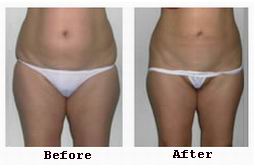
Tumescent Technique is a new method used in liposuction. This has reduced post Tumescent Technique is a new method used in liposuctionoperative bruising, swelling, pain and minimal blood loss. Because of this the need for a blood transfusion is greatly reduced.
In this technique specific areas of excess fat are injected with a large amount of anesthetic liquid before performing liposuction. The liquid causes the compartments of fat to swell and become firm or "tumesced".
The expanded fat compartments allow the liposuction cannula to travel smoothly beneath the skin as the fat is removed. This technique is commonly used on large areas of excess fat and in areas that require enhanced precision, such as the face, neck, arms, calves and ankles.
Although the anesthesia requirements are lessened and blood loss is minimal, patients undergoing the procedure still face the same risks and cosmetic complications associated with traditional liposuction surgery.
General anesthesia is the best option for this procedure, though certain doctors suffice with the anesthetic contained in the solution along with sedation that provide sufficient comfort. The tumescent liquid is warmed and is injected into the area to be treated. As the liquid enters the fat, it becomes swollen, firm and blanched. Liposuction is then performed on these tumesced areas. Post surgical pain is reduced with the effect of the anesthetic solution. Mild swelling in the area, as well as some fluid drainage from the incision sites are after effects of this procedure. People recover faster compared to conventional methods. Though only light activity is adviced for a few days, one could resume normal activity within a few weeks.
Though a noticeable difference is visible immediately after surgery, significant improvement can be seen after three weeks, when most of the swelling has subsided. In three months, any persistent swelling will disappear and the final contour will be visible.
There are also risks specifically associated with the tumescent technique. These rare complications include pulmonary edema (the collection of fluid in the lungs), which may occur if too much fluid is administered and lidocaine toxicity, which occurs if the solution's lidocaine content is too high.
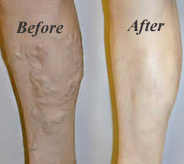
Varicose vein therapy is used to treat enlarged veins (varicose veins) tVaricose vein therapy is used to treat enlarged veins (varicose veins)hat have problems with their valves.Varicose veins usually occur in the legs. Normally, valves in your veins keep blood flowing. But the valves in varicose veins are either damaged or missing. This causes the veins to remain filled with blood, especially when you are standing.Varicose veins treatments help remove non-moving (stagnant) blood and re-route blood flow through deeper veins in the legs.
There are several types of treatment:
▣ Surgical vein stripping is an outpatient procedure. You receive general anesthesia, which means you are asleep and do not feel pain. The surgeon makes a cut at the bottom (ankle end) and the top (groin end) of the varicose vein. A thin, plastic, tube-like instrument is placed into the vein and tied around it.
▣ When the tube is pulled out, it pulls the vein from out under the skin. Small surgical cuts can also be made over individual veins to remove them
▣ Sclerotherapy is done while the patient is standing. A solution is injected into each varicose vein to cause clotting, which closes off the vein. An elastic bandage is wrapped snugly around the legs after the procedure
▣ Endovenous ablation therapy is an outpatient procedure. The therapy uses heat to destroy vein tissue. A thin catheter (or tube) is inserted into the vein through a tiny skin incision under local anesthesia. Then, using either laser or radiowave (radiofreqency) energy, the vein is heated and cauterized. This closes off the vein
Today, fewer doctors are performing the traditional vein stripping surgery as more patients choose the less invasive endovenous ablation procedure. The endovenous ablation procedure has shown to work the same as or better than surgery. Patients have significantly less pain and a quicker recovery.
Why the Procedure is Performed
Varicose vein therapy may be recommended for:
▣ Varicose veins that cause circulatory problems (venous insufficiency)
▣ Leg pain, often described as heavy or tired
▣ Skin irritation and sores (ulcers)
▣ Blood clots in the veins (phlebitis), which can travel to the lungs (embolism)
▣ Cosmetic purposes
The risks for any anesthesia include:
▣ Reactions to medications
▣ Problems breathing
The risks for any surgery include:
▣ Bleeding
▣ Infection
▣ Bruising
Unique risks of endovenous varicose vein surgery include:
▣ Blood clots (call your doctor if your feet or legs swell)
▣ Treated vein opens up
▣ Skin burns from heated catheter
Unique risks to sclerotherapy treatment include:
▣ Irritation of the vein from the solution
▣ Blocked blood flow caused by the solution
▣ Leakage of the solution out of the veins into other tissue (can damage surrounding tissue and form ulcers)
Risks associated with any treatment for varicose veins include:
▣ Nerve injury
▣ Return of the varicose veins
After endovenous ablation therapy and sclerotherapy the patient can almost immediately resume most of their normal activities. Surgical stripping usually requires at least 3 to 7 days rest, but you could need up to several weeks.
After treatment your legs are wrapped tightly in bandages. It would be possible for you to walk after the surgery. In fact, walking is encouraged to minimize swelling and avoid the risk of deep venous thrombosis, especially with catheter or endovenous treatment. It is recommended that you keep your feet raised above the heart whenever possible.
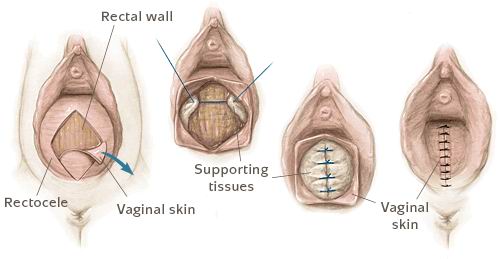
This surgery is required when the vagina and the rectum are no VAGINA POSTERIOR REPAIR longer held properly to their respective positions. The rectum drops down onto the back of the vagina and shows out as a bulge. This bulge is called a prolapse and a prolapsed rectum is called a rectocele. This situation causes the rectum not to empty properly when needed. The prolapse gives a lot of discomfort in the vagina. The most common reasons are due to overstretch of the supports to the vagina and rectum during pregnancy. In most cases it gets back to the normal position.
The operation tightens up the supports to the rectum and removes the bulge in the vagina.
The patient is administered general anesthesia and be completely asleep. An incision is made through the posterior of the vagina and the supports to the rectum are shortened with stitches and the bulging part of the vagina cut away. This relieves the weakness. The wound in the vagina is closed with sutures. Hospitalization for about six days is required after this surgery.
Cosmetic body reshaping is a highly individualized process, and the decision to undergo surgery should be based on your personal goals and expectations. If you’re considering body reshaping, it’s important to be in good overall health and have realistic expectations about the outcome. Body reshaping procedures are designed to enhance your natural features, not completely alter them, so it’s essential to have open and honest conversations with your surgeon about what you hope to achieve.
At Best Cosmetic Hospitals, we understand that every body is different. That’s why our featured doctors take a personalized approach to every body reshaping procedure. During your consultation, your surgeon will assess your body type, discuss your goals, and create a tailored treatment plan that aligns with your unique needs. Whether you want a subtle enhancement or a dramatic transformation, our doctors will work with you to help you achieve your desired results.
For individuals seeking body contouring with minimal downtime, there are also non-surgical body reshaping options available. Treatments like CoolSculpting and radiofrequency skin tightening offer non-invasive solutions for reducing fat and tightening skin without the need for surgery. These procedures are ideal for those who want subtle improvements and faster recovery times.
The recovery process for cosmetic body reshaping varies depending on the procedure and the individual. Most body contouring surgeries require some downtime, with patients typically resuming light activities within a week or two. Full recovery can take several weeks to a few months, during which time the body will continue to heal and the final results will become more visible.
During the recovery phase, it’s essential to follow your surgeon’s post-operative care instructions, which may include wearing compression garments, avoiding strenuous activities, and attending follow-up appointments. While some swelling and bruising are common immediately after surgery, these symptoms will gradually subside, revealing the new contours of your body.
Results from body reshaping procedures can be long-lasting, especially if you maintain a healthy lifestyle, including a balanced diet and regular exercise. Many patients find that their new body shape not only enhances their physical appearance but also boosts their self-confidence and improves their quality of life.
Selecting the right surgeon is critical to achieving successful body reshaping results. At Best Cosmetic Hospitals, we feature only the most qualified and experienced surgeons, each specializing in body contouring and enhancement procedures. Our doctors are board-certified, internationally trained, and have a proven track record of delivering exceptional results.
Here’s what to consider when choosing a cosmetic body reshaping surgeon:

Look for a surgeon with extensive experience in body contouring procedures. A specialist in body reshaping will have the skills and expertise to deliver the best possible results.

Read reviews and testimonials from previous patients to gauge the surgeon’s success rate and patient satisfaction.
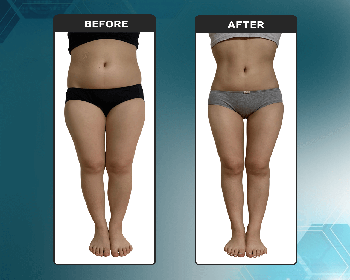
Viewing before-and-after photos of previous patients can help you understand the surgeon’s aesthetic style and their ability to achieve results similar to what you desire.
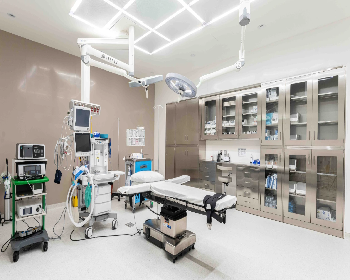
Ensure that the procedure will be performed in a reputable, accredited hospital or clinic that meets international safety standards.
At Best Cosmetic Hospitals, we are dedicated to helping you achieve your body goals with confidence and ease. Our global network of top hospitals and surgeons ensures that you receive the highest level of care, expertise, and support throughout your body reshaping journey. Whether you’re considering liposuction, a tummy tuck, or a full body lift, we connect you with the best doctors who will help you look and feel your best.